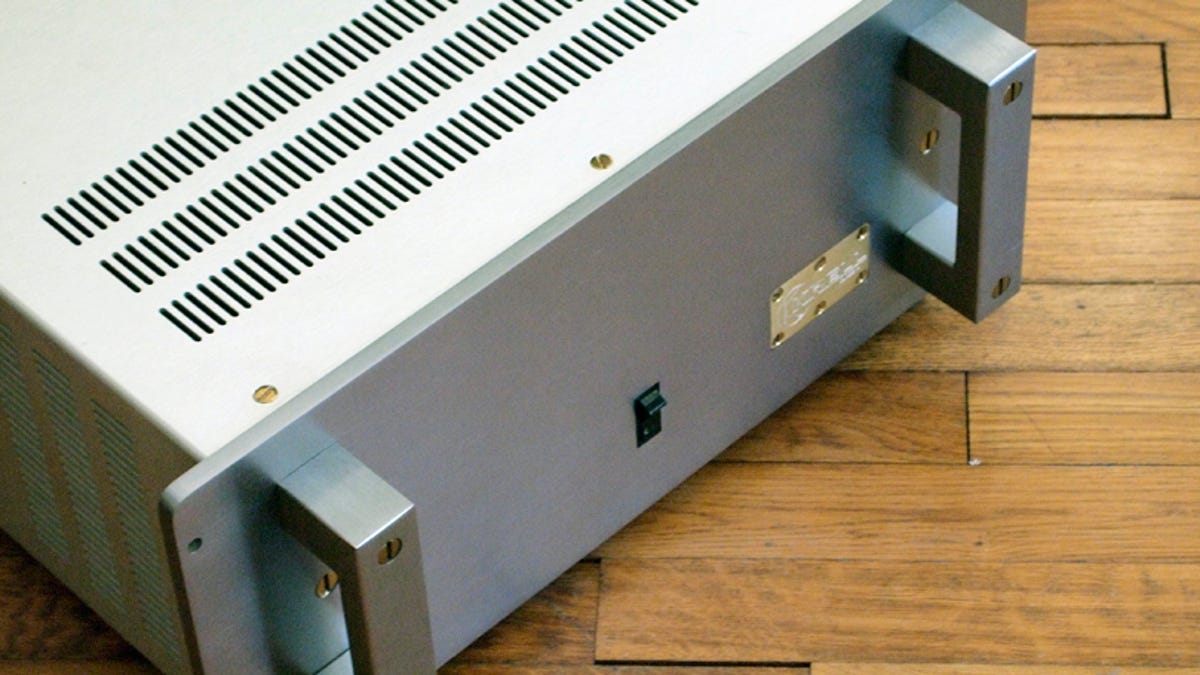High-end audio on the cheap
By carefully selecting used high-end gear, you can assemble a great hi-fi and save a bundle.

One of the things that separates high-end audio from mass market gear is that it's built to last and perform at a high level for decades. I bought a 20-year-old, mint condition Audio Research SP-6C tube preamplifier 10 years ago. It looked great and sounded wonderful, but a few years later I sold it to my cousin, who was just starting to get into high-end audio.
Late last year, I bought a 30-year-old Krell KSA 50 stereo amplifier from one of my old customers. He loved the amp and listened to it all the time, but he needed money and I was thrilled to buy a piece of my audio history. I had sold literally tons of Krell amps when I worked as a high-end salesman, starting in the late 1970s. This "little" 50-watt stereo amp weighs a hefty 60 pounds, nearly triple the weight of many 7x100 watt receivers! The KSA 50 sold for $1,900 when new, I paid $1,200 for this one, in perfect shape. I used the KSA 50 with my Magnepan 3.7 flat panel speakers, as well as for some speaker reviews I'm working on, and the Krell still sounds incredible.
Those components weren't cheap, but I also scored a 33-year-old NAD 3020 integrated amp on eBay for $66 a few years ago. It sounds better than most new $300 amps. If you're curious about how tube amplifiers sound, a good place to start would be the legendary Dynaco Stereo 70 tube amplifiers. Introduced in 1959, the little Dynaco was made in stops and starts through the 1990s! Hundreds of thousands were sold.
Buying used gear is not without risk. Ask a lot of questions before purchasing used electronics, starting with: does it work? With an amp, has it recently been hooked up to speakers and played? Just turning it on doesn't prove anything; if they haven't played it, don't buy it. Does it make any strange noises: hum, pop, or crackle? Do all the inputs work? If the seller can't answer those questions, move on. With speakers other cautions apply, the most important being: have the drivers visibly deteriorated, cracked, or dented? Does the speaker sound distorted when played loud? Looking OK is not the same thing as sounding OK. If the speaker company is still in business, find out if they stock replacement parts and service older models. Of course, that last bit of advice applies to buying any older gear. Listening before you buy is obviously helpful, but not always possible. Ask if you can return the gear if it's not up to snuff. When in doubt, proceed with caution.
There's a lot of awesome-sounding high-end gear from the past to choose from. The Adcom GFA-555 power amp was a big seller, and 20-year-old Marantz and Pioneer receivers are still quite nice. Rega Planar and Thorens turntables are worth checking out, and the same goes for early Denon and Marantz CD players. For speakers, I like old models made by Rogers, Magnepan, Vandersteen, Spendor, JM Labs, Mirage, Dynaudio, Snell, Advent, JBL, and Klipsch. There are deals to be had. With a little effort, you can put together a really nice-sounding system for $1,000.
Audiogon is terrific source for used high-end gear, and eBay can be a good place to start. Innovative Audio in Canada has a nice selection of vintage gear.

